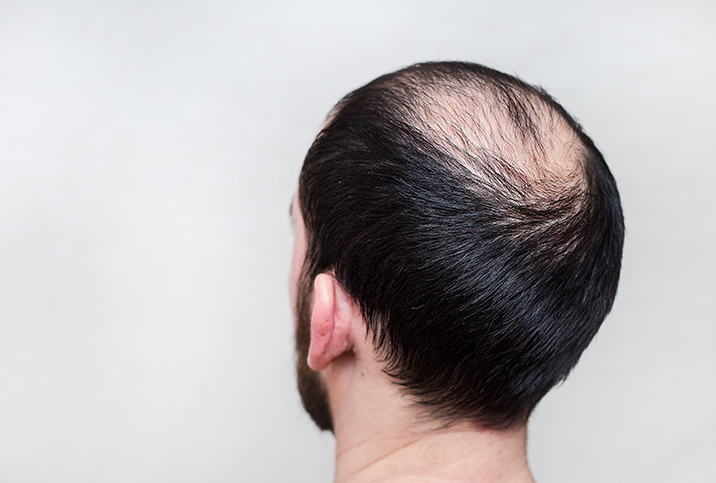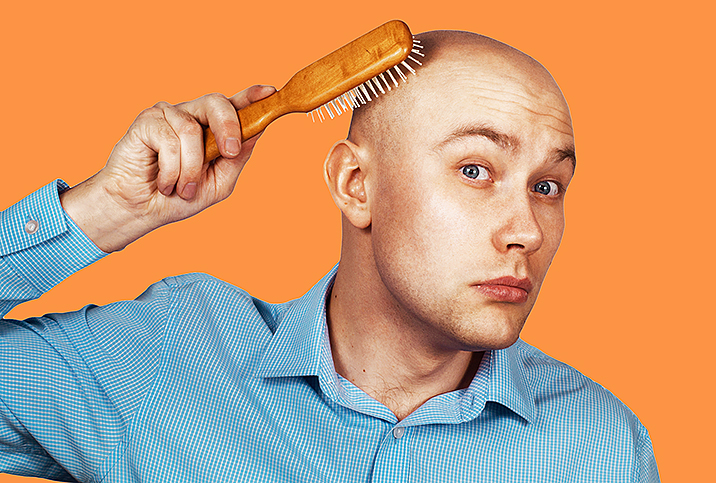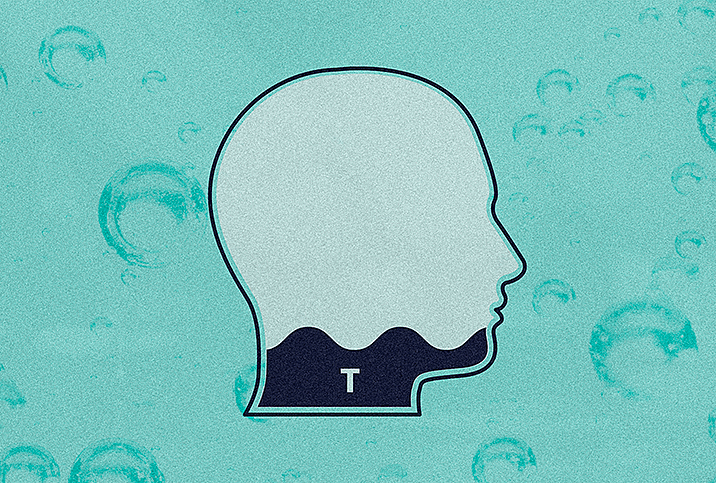The Hair-Raising Issue of Thinning Hair

By age 35, two-thirds of men will experience some degree of hair loss, according to the American Hair Loss Association. We already know genetics play a part in male pattern baldness—chances are you'll experience hair loss if the men in your family did—but even if your dad and uncles rocked full heads of hair into old age, you're not in the clear.
Reasons for hair loss
Certain medications—many that treat arthritis, depression, high blood pressure, heart disease and cancer—can exacerbate the problem. Other culprits are diabetes, an enlarged prostate, obesity and thyroid issues, but don't rule out extremely stressful events, such as divorce or the death of a loved one, as well.
Testosterone levels also play a role in hair loss. Testosterone is converted to an androgen called dihydrotestosterone (DHT), and DHT affects hair follicles. High levels of DHT can shrink hair follicles until hair simply stops growing. A receding hairline or hair loss at the temples and on the crown are often the first signs that your DHT levels are high. Some people think bald men have higher testosterone—more testosterone that is converted to DHT. However, you see baldness in men who have either low-T or high-T levels.
According to the National Institutes of Health (NIH), preservatives and fast foods that contain artificial flavors may increase the risk of high DHT production, while legumes, bananas, soybeans, black pepper, sesame seeds and pumpkin seeds may promote hair growth by blocking DHT. And the good news for those of you addicted to your afternoon Starbucks fix: A 2007 laboratory study found that caffeine helped block the effect of DHT in male hair follicles by prolonging anagen duration, which is the hair's growth stage.
Quick fix
If you're ready to take immediate action against thinning hair, you have a few options.
Rogaine (minoxidil) is an over-the-counter medication that comes in a liquid foam or shampoo, and it works best when applied to the scalp twice a day. Expect to see results in about six months, but you'll have to use the product indefinitely to reap the benefits. To date, there is no evidence to suggest that Rogaine causes diminished libido or erectile dysfunction (ED).
You'll need a prescription for Propecia (finasteride), a pill that's taken twice a day and whose results have been promising. Finasteride blocks the conversion of testosterone to DHT, which negatively affects hair follicles. Aside from slowing down hair loss, Propecia can also spur new hair growth, according to many users. The Mayo Clinic points out that finasteride may not work as well for men older than 60, so discuss your options with your primary care provider.
As with any drug, finasteride produces side effects. Research has found that men who take finasteride to treat hair loss are five times more likely to suffer erectile dysfunction. While the number of men who experienced erectile dysfunction when taking finasteride is small, it is not insignificant. The good news is that the problem cleared up as soon as men stopped taking finasteride. The bad news is that they were right back to square one with their thinning hair.
Bald is beautiful
What can you do if you've tried everything and are ready to throw in the towel? If your hairline is starting to recede, you can simply shave your head. Bald is beautiful.
There is some evidence to suggest that women actually find men with shaved heads sexier and stronger than men with a full head of hair. So perhaps drugs aren't the answer. Maybe it's time to bite the bullet and go the way of Dwayne Johnson, Patrick Stewart and Taye Diggs, who definitely brought sexy back when they shaved their heads.
Whatever path you decide to pursue, know that if you're not pleased with the results, you can try another option.

















